Here is a full list of the 13 victims shot dead on Bloody Sunday and the 2010 Saville Report's findings on each of their deaths.
Patrick Doherty (31)
The married father-of-six was shot from behind as he attempted to crawl to safety from the forecourt of Rossville Flats. The active civil rights campaigner died at the scene after being hit with a single round that entered his body through the right buttock and exited his left chest.
While the soldier - Lance Corporal F - who fired at him claimed he had been armed with a pistol, a photograph of the factory worker taken moments before he was hit showed no evidence of a firearm.
Lord Saville found that he was not armed and did not pose a threat, and dismissed Lance Corporal F's account as false.
Gerald Donaghey (17)
Intense controversy has surrounded the question of whether the IRA youth member was armed with nail bombs when he was shot in the abdomen while running between Glenfada Park and Abbey Park.
The bullet that killed him had already passed through and fatally wounded 35-year-old Gerard McKinney.
Four nail bombs were found in his pockets after his death but witnesses who tended to him in the moments after he was hit said they found nothing suspicious on his person, prompting claims that the bombs were planted.
The inquiry heard evidence from a leader of the IRA Youth that the teenager had been given two nail bombs in the hours before the shootings.
Lord Saville said it was probable that he was in possession of the bombs when he was shot. But he stressed that he was not preparing to throw a nail bomb when he was shot and soldiers did not fire at him because of his possession of nail bombs.
The report concluded he was shot "while trying to escape from the soldiers".
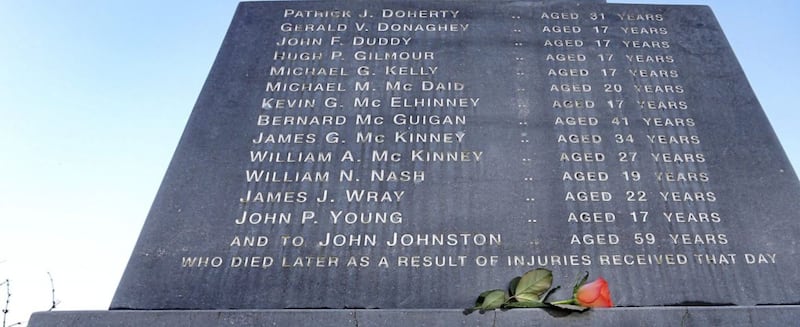
John "Jackie" Duddy (17)
The keen boxer was the first to be killed on Bloody Sunday. He was running away when he was shot in the chest in the car park of Rossville Flats.
Lord Saville said he probably had a stone in his hand at the time.
The inquiry chairman said the soldier who killed him - Private R - may have thought he was about to throw a bomb at him, but he said he could not have been sufficiently confident about this to justify firing.
Lord Saville concluded: "It is possible that Private R fired in a state of fear or panic, giving no proper thought to whether his target was posing a threat of causing death or serious injury".
Hugh Gilmour (17)
The talented footballer and ardent Liverpool fan was hit with a single shot as he ran away from the rubble barricade in Rossville Street.
A student nurse attempted to treat his wounds but he died at the scene.
The soldier who fired at him - Private U - claimed he aimed at a man with a handgun. But a photo taken of the stricken teenager moments after he fell showed no evidence of a weapon and witnesses insisted he was unarmed.
Lord Saville rejected Private U's account as "knowingly untrue".
Michael Kelly (17)
The trainee sewing machine mechanic was shot once in the abdomen close to the rubble barricade in Rossville Street by a soldier crouched some 80 yards away at Kells Walk.
The soldier - Lance Corporal F - initially said nothing about this shot but later admitted he fired it.
Lord Saville said the paratrooper falsely claimed the teenager was a nail bomber.
The inquiry team found Lance Corporal F did not fire in panic or fear, without giving proper thought to whether he had identified a person posing a threat of causing death or serious injury.
Lord Saville added: "We are sure that, instead, he fired either in the belief that no-one at the rubble barricade was posing a threat of causing death or serious injury, or not caring whether or not anyone at rubble barricade was posing such a threat".
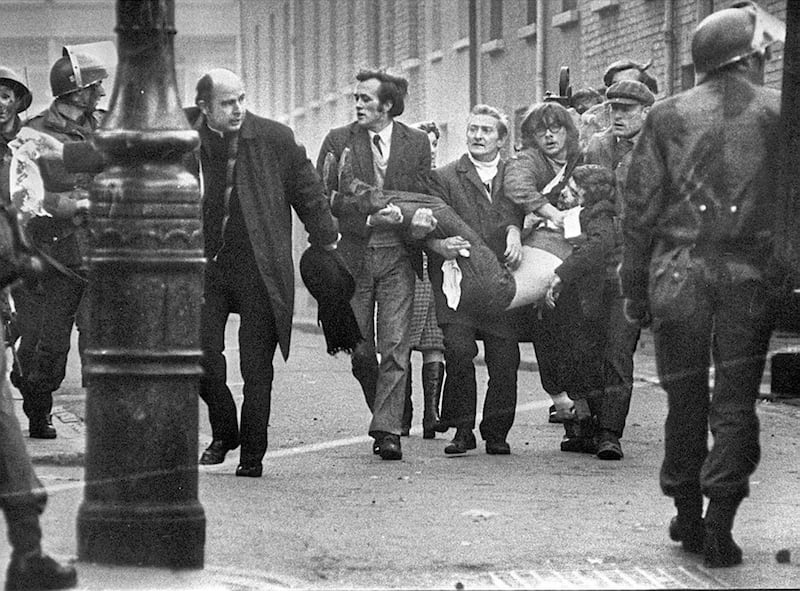
Michael McDaid (20)
The barman died instantly after being shot in the face at the barricade in Rossville Street.
The downward trajectory of the bullet entry wound led to claims he was shot by soldiers positioned on top of Derry's historic stone walls, which overlooked the scene.
But Lord Saville rejected that suggestion, insisting no-one was shot from the walls.
Soldiers who shot him and others at the barricade claimed they fired at men armed with pistols and nail bombs.
Lord Saville again dismissed those accounts as "knowingly untrue".
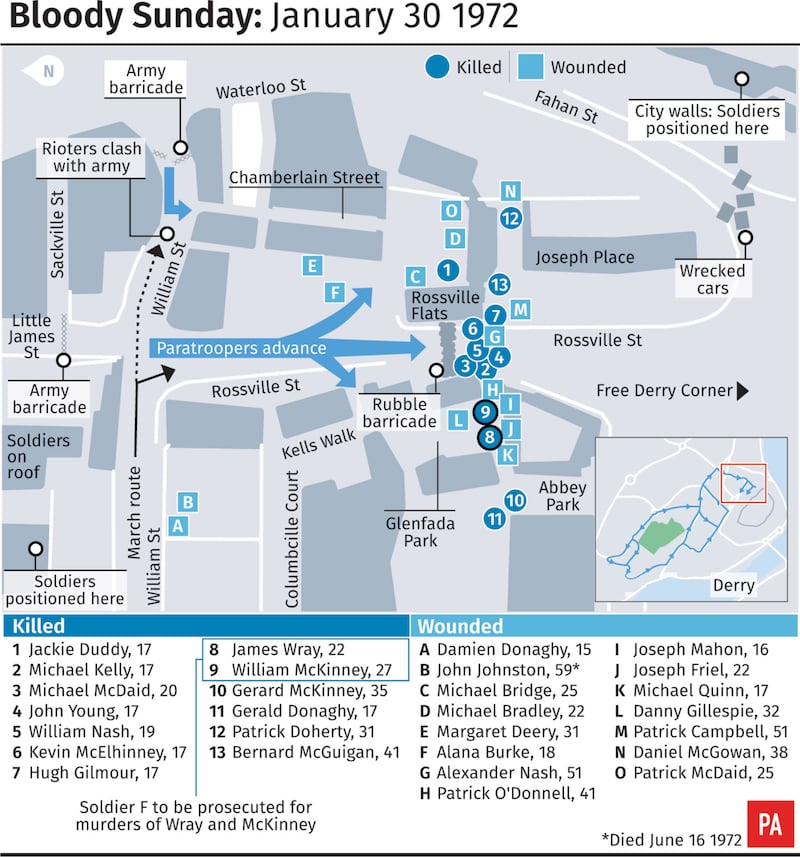
Kevin McElhinney (17)
The grocery store worker was shot from behind as he crawled towards Rossville Flats.
One of two soldiers - Private L or Private M - positioned at Kells Walk fired the fatal bullet, under orders from either or both Colour Sergeant 002 or Corporal 039.
The round entered his right buttock and exited his shoulder.
Witnesses, including a Catholic priest, claimed the rock-and-roll devotee was not armed.
The two soldiers and two officers claimed the shots had been fired at two men, one or both armed with rifles, crawling away from the barricade.
Lord Saville said: "They probably believed that they might have identified a gunman or gunmen, but none of them could have been satisfied that they had done so. Their targets were crawling away and not posing an immediate threat of causing death or serious injury".
Bernard "Barney" McGuigan (41)
The father-of-six was going to the aid of Patrick Doherty, waving a white handkerchief in his hand, when he was shot in the head with a single round.
He died instantly.
Witnesses claimed he was unarmed.
Lance Corporal F, who also shot Patrick Doherty, killed him as well.
Lord Saville rejected his claim that had been firing at a man with a pistol.
He said: "Lance Corporal F did not fire in a state of fear or panic. We are sure that he fired either in the belief that no-one in the area into which he fired was posing a threat of causing death or serious injury, or not caring whether or not anyone there was posing such a threat".
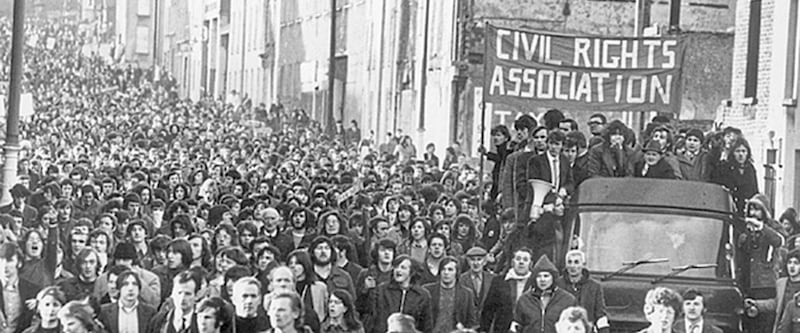
Gerard McKinney (35)
The father-of-eight was running close behind Gerald Donaghey in Abbey Park when the bullet that killed both of them hit him first.
The bullet fired by Private G passed sideways through his body but did not wound either arm, indicating that his hands were possibly raised at the time.
Lord Saville ruled that Private G falsely denied that he had fired in Abbey Park.
He added: "He (Private G) did not fire in fear or panic and we are sure that he must have fired knowing that Gerard McKinney was not posing a threat of causing death or serious injury".
William "Willie" McKinney [not related to Gerard] (27)
The keen amateur film-maker recorded scenes from the march with his hand-held cinecamera before the shooting started.
The camera was found in his jacket pocket as he lay dying after being shot in the back in Glenfada Park.
The soldiers who fired in this area all claimed they fired at people in possession of or seeking to use bombs or firearms.
But Lord Saville dismissed these accounts: "In our view, none of these soldiers fired in the belief that he had or might have identified a person in possession of or using or about to use bombs or firearms".
William Nash (19)
The dockworker was struck by a single bullet to the chest close to the rubble barricade in Rossville Street.
Witnesses said he was unarmed, but the initial Widgery Tribunal found that he had probably been firing a gun.
Lord Saville rejected this assertion and soldiers' claims that those they shot at the barricade had either nail bombs or guns.
He said: "We are sure that these soldiers fired either in the belief that no-one in the areas towards which they respectively fired was posing a threat of causing death or serious injury, or not caring whether or not anyone there was posing such a threat."
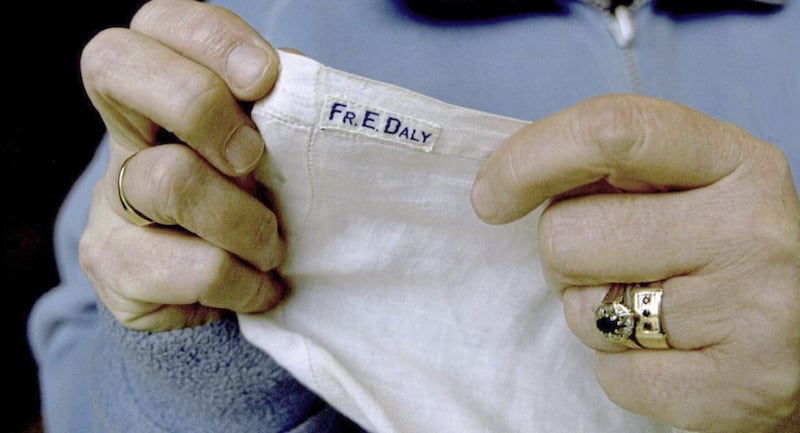
James Wray (22)
Engaged to be married, the civil rights activist was shot twice in the back in Glenfada Park.
The second shot was fired as he lay mortally wounded on the ground.
Rejecting soldiers' claims that they had shot him in the belief he had been armed, Lord Saville was particularly damning of the paratrooper who fired the second round.
He said: "Whichever soldier was responsible for firing the second shot, we are sure that he must have known that there was no possible justification for shooting Jim Wray as he lay on the ground".
John Young (17)
The menswear shop clerk was killed instantly with a single shot to the head at the rubble barricade.
The bullet hit him in the left eye and travelled downwards through his chest.
Based on lead particles allegedly found on his left hand, the 1972 Widgery Tribunal found that he had probably fired a gun.
But Lord Saville rejected this finding, concurring with witnesses who insisted he was unarmed.
- Fifteen other people were injured on the day.
One of those shot was 59-year-old John Johnston.
The draper was shot twice by soldiers positioned inside a derelict building in William Street. He died four months later in hospital, with many considering him the 14th victim of Bloody Sunday.
However, his death was formally attributed to an inoperable brain tumour and Lord Saville found: "We are satisfied that John Johnston's death was not the result of any of the wounds he sustained on Bloody Sunday."
He was shot about 15 minutes before the main shootings and at a location away from the other killings.
The soldiers who fired were targeting 15-year-old Damien Donaghy, who was struck in the thigh.
Shortly after this incident, two members of the Official IRA fired at the building, but Lord Saville made clear that the first shots were from the soldiers' rifles.
The inquiry chief acknowledged that Mr Johnston was hit accidentally by bullets aimed at the teenage boy. But he added that Damien was "not posing a threat of causing death or serious injury".
As well as Mr Johnston and Damien, the others injured in the shootings were: Michael Bradley (22); Michael Bridge (25); Alana Burke (18); Patrick Campbell (51); Margaret Deery (31); Joseph Friel (22); Danny Gillespie (32); Patrick McDaid (25); Daniel McGowan (38); Joseph Mahon (16); Alexander Nash (51); Patrick O'Donnell (41) and Michael Quinn (17).







